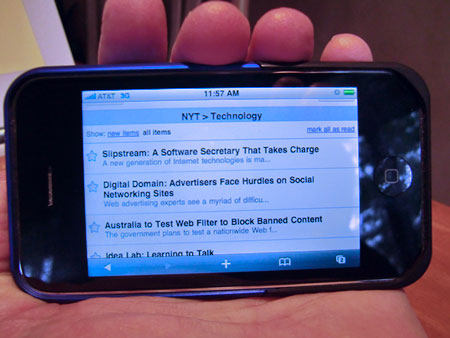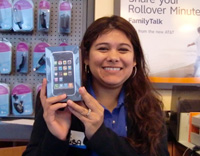“What will it take to get one of the remaining jobs in the all-digital newsroom? Certainly an understanding of, and probably enthusiasm for, new forms of media and storytelling. The transformed newsroom will be filled with multi-functional journalists who are comfortable carrying around a digital camera and tiny video camera; who make it part of their routine to record audio for possible use in podcasts or multimedia project sound clips; who are regular users of social networks and understand how to leverage them to communicate with and attract new readers, and share some personal information about themselves as well as promote their work; and who are comfortable and willing to put in the time to engage and communicate with their readers or viewers, including participating in reader comment threads accompanying their stories.”
“With blogs at the center of a reporter’s work universe, there’s still much to do in this new kind of news operation.
Here’s what the reporter/blogger will routinely do:
1. Long-form stories and features. But in this new environment, a reporter may do fewer of these because of other duties. And they may be in a variety of formats, from simple text and video to multimedia presentations, audio or podcasts.
2. Regular blog entries (basically short articles) through the day. The reporter in this organization doesn’t wait till all the facts are in when it’s a big breaking story, but reports what’s known quickly. Additional blog updates can be added as the news event progresses. (Again, don’t take “blog entry” to mean “text.” A reporter might post video or audio to the blog, as well.)
3. Instant updates. When relevant, a reporter will put out short alerts to mobile phone news alert subscribers; to an e-mail list; as a “tweet” on Twitter or brief report on other social networks to update the reporter’s “friends” and “followers,” etc. This can take but a minute (with proper systems in place to streamline the process), and then it’s on to the write-up for the blog.”
— From Steve Outing column at Editor & Publisher


 It’s done. After a little agonizing and a little nagging, I bought an iPhone. Lisa, the AT&T rep couldn’t believe I didn’t have a mobile number I wanted to keep. She spoke very slowly as she asked me if I had an iTunes account and explained that Safari would be my browser.
It’s done. After a little agonizing and a little nagging, I bought an iPhone. Lisa, the AT&T rep couldn’t believe I didn’t have a mobile number I wanted to keep. She spoke very slowly as she asked me if I had an iTunes account and explained that Safari would be my browser. 85% of Americans have a cell phone (there are actually more US mobile phones than Americans age 13 and older) Source: CTIA Wireless Association
85% of Americans have a cell phone (there are actually more US mobile phones than Americans age 13 and older) Source: CTIA Wireless Association Mac users are familiar with .Mac, now called MobileMe. It’s online storage you can use to move files from one computer to another. It’s worked fine for me and I’ve used it to shuffle files between work, home and the MacBook.
Mac users are familiar with .Mac, now called MobileMe. It’s online storage you can use to move files from one computer to another. It’s worked fine for me and I’ve used it to shuffle files between work, home and the MacBook.